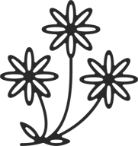
-
Why we like this plant
Nepeta 'Junior Walker' is the perfect catmint for gardeners looking for a non-invasive, long-flowering, and pollinator-friendly perennial. Its compact size makes it ideal for smaller gardens, edging, and container planting, while its fragrant foliage and drought tolerance ensure it thrives with minimal care.
-
About this plant
Nepeta 'Junior Walker' is a compact and improved version of the popular 'Walker's Low', offering the same abundant flowering and fragrant foliage in a smaller, well-behaved form. This sterile variety does not self-seed, making it an excellent choice for tidy borders, edging paths, and container planting. From late spring to early autumn, it produces delicate, tubular lavender-blue flowers that attract bees and butterflies. Its soft, grey-green aromatic foliage provides year-round texture, and its drought tolerance makes it ideal for dry, sunny gardens. This easy-care, deer-resistant perennial is a fantastic addition to cottage gardens, Mediterranean-style landscapes, and pollinator-friendly planting schemes.
-
Key features
- Compact, non-invasive variety, ideal for small spaces
- Lavender-blue flowers from late spring to autumn
- Silver-grey aromatic foliage for year-round interest
- Attracts bees, butterflies, and other pollinators
- Drought-tolerant and low-maintenance
-

Eventual height and
spread -

Growth
habitCompact, clump-forming, spreading
-

Moisture
Drought tolerant; prefers dry to moderately moist conditions
-

Position in
the GardenBorders, edging, containers, cottage gardens, wildlife-friendly planting
Planting guide
- Plant in well-drained, sandy, or loamy soil
- Position in full sun for best flowering
- Space plants 40-50cm apart to allow for spreading
- Water well after planting to help establish roots
Care tips
- Plant in well-drained soil in full sun
- Water occasionally; drought-tolerant once established
- Deadhead spent blooms to encourage continuous flowering
- Cut back hard after the first flush of flowers for a second bloom
- Divide clumps every few years to maintain vigour
Winter care
- Fully hardy and requires no winter protection
- Leave some stems intact for winter interest and wildlife
- Cut back dead growth in early spring to promote fresh shoots










